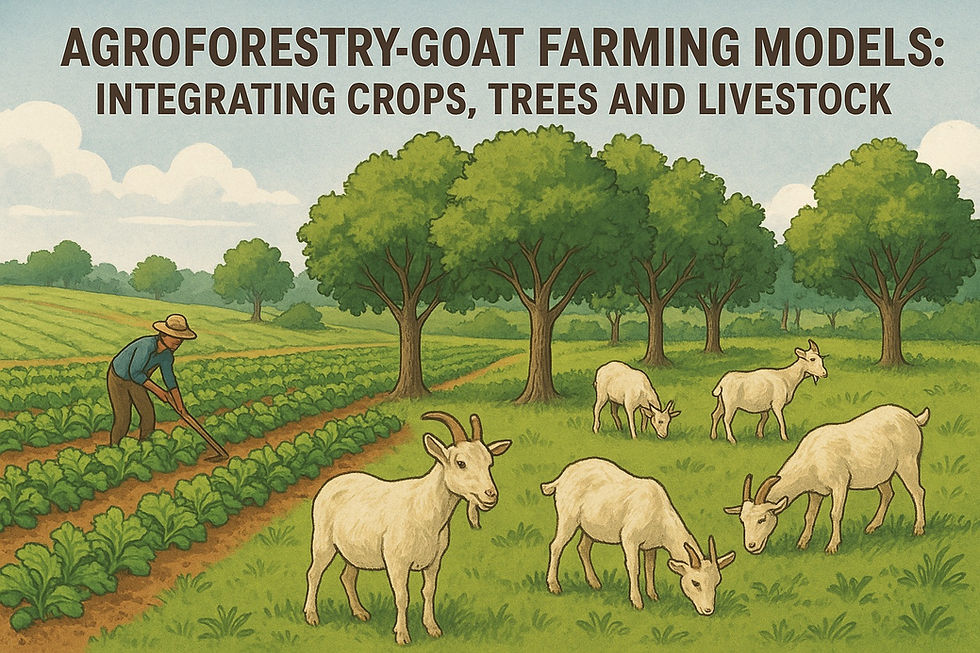Preserving Indigenous Small Livestock Breeds in Northeast India: Why It Matters
- Global Services TGT
- Apr 16
- 2 min read
North East India known for its rich biodiversity and unique climatic conditions, is home to several indigenous small livestock breeds that have adapted to the region’s environment over centuries. These breeds, including native pigs, goats, poultry and rabbits, play a crucial role in the livelihoods of rural communities. However, rapid commercialization, crossbreeding and habitat loss poses a significant threat to their survival. Preserving indigenous livestock breeds is essential for sustainable agriculture, food security and biodiversity conservation.
Importance of Indigenous Livestock Breeds: Indigenous small livestock breeds in Northeast India are vital for multiple reasons:
Adaptability to Local Conditions: Native breeds are naturally adapted to the region’s high humidity, hilly terrain and fluctuating temperatures. They require minimal inputs in terms of feed, healthcare and housing.
Resistance to Diseases: These breeds have developed strong immunity against local diseases, reducing the need for expensive veterinary care and chemical treatments.
Economic Sustainability for Small Farmers: Small-scale farmers and tribal communities depend on these breeds for meat, milk, eggs and manure. Indigenous livestock provide a steady income with lower maintenance costs compared to exotic breeds.
Preservation of Genetic Diversity: Maintaining diverse indigenous livestock is crucial for genetic resilience. Crossbreeding with exotic species can dilute true to the breed type traits such as disease resistance and adaptability.
Cultural and Traditional Significance: Indigenous livestock have deep cultural and religious significance in many tribal communities. They are often used in traditional rituals, festivals and medicinal practices.
Threats to Indigenous Breeds: Despite their importance, indigenous livestock breeds face several threats:
Crossbreeding with Exotic Breeds: The introduction of high-yield foreign breeds often leads to genetic dilution, reducing the resilience of native species with low adaptability.
Declining Grazing Land: Rapid urbanization and deforestation have led to the loss of traditional grazing areas and a shift to semi-stall-fed rearing.
Lack of Awareness and Conservation Efforts: Farmers often prefer exotic breeds due to perceived higher productivity, without realizing the long-term benefits of indigenous breeds.
Climate Change Impacts: Rising temperatures, erratic rainfall, and extreme weather conditions affect livestock health and food availability.
Strategies for Conservation:
Documentation and Genetic Mapping: Establishing breed registries and genetic mapping programs can help in identifying and conserving pure indigenous breeds.
Encouraging Traditional Breeding Practices: Local breeding practices should be promoted to maintain the purity of native/local breeds.
Government and Policy Support: Policies that provide incentives to farmers for rearing indigenous livestock, along with financial assistance and veterinary care, can encourage preservation of breeds and efforts.
Community-Based Conservation Programs: Engaging local communities in conservation initiatives, including creating breeding centers and awareness campaigns, can strengthen preservation efforts.
Integration with Organic and Sustainable Farming: Indigenous livestock can be incorporated into organic farming systems, utilizing natural grazing and manure to enhance soil fertility.
The preservation of indigenous small livestock breeds in North East India is not just about maintaining biodiversity—it is about securing sustainable livelihoods, strengthening food security, and conserving cultural heritage. By implementing proper conservation strategies, promoting blending of traditional and improved breeding practices, and raising awareness among farmers, these invaluable breeds can be safeguarded for future generations and the economic growth of livestock farmers.



Comments